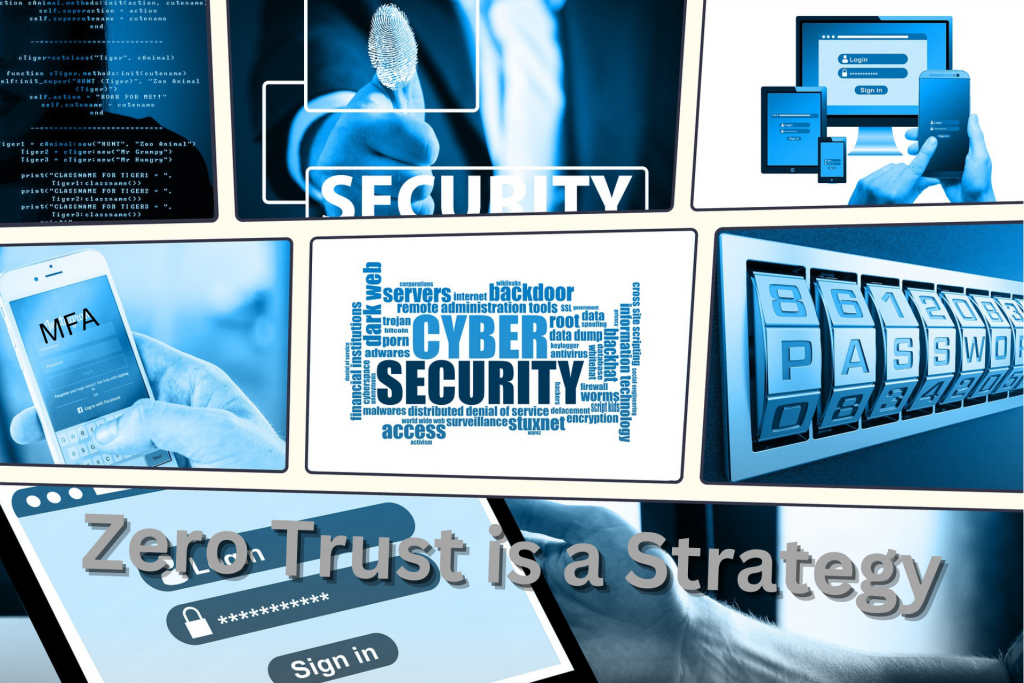Zero Trust is unlike the best password manager, it is more.
Zero Trust security is a system which is changing the cyber security game dramatically. It is a break from the widely used perimeter-based security system which is more proactive and risk-centric in its method. It is a system used in congruence with password management since one would not be enough to protect your business from different cybersecurity threats.
Because of this, more than half of organizations world-wide are now prioritizing the use of Zero Trust. This system approaches everyone as unauthorized users unless proven otherwise. Therefore, it would require rigorous verification before providing access to data. However, implementation of this system is riddled with pitfalls that can put its effectiveness at risk.
Here are some of the common issues and solutions to them when it comes to Zero Trust.

Password management
Zero Trust is unlike the best password manager
By its name alone, Zero Trust shifts focus from assuming that everyone within the system can be trusted. Instead, it treats every user as a threat by default. Hence, users must disprove the assumption by providing security information. Unlike the best password manager that creates a key for you to enter, Zero Trust checks your identity even with the key in hand.
Zero Trust stands on three principles. First, users are only given access to resources that they need to do their tasks. Second, authentication and verification are ongoing. As such, users and their hardware are re-evaluated for access is continuous. Lastly, to limit damage in case of a cyber-attack, the network is divided into smaller pockets.
Zero Trust Mistakes to Avoid
Thinking that Zero Trust, like having the best password manager , is a one-shot solution to your cybersecurity needs
This is not a plug-and-play system and so you must know the following pitfalls to stay away from. Similarly, it works with other tools and procedures for a multi-layer cybersecurity protection.
Mistaking Zero Trust as a product to sell
Zero Trust is a strategy not a product and especially not one that is plug-and-play. Although some vendors may try to sell Zero Trust to you like it is. It requires an extensive and comprehensive strategy application on top of the technological products. An example of a tool used is the multi-factor authentication (MFA).
Assuming that the use of technology is all there is
Yes, technology is a necessary tool in Zero Trust. However, it goes far beyond it. Zero Trust strategy can only be successful if the people and processes are aligned with the tools and new security culture.
Doing everything at once
Zero Trust should not be over complicated. Avoid getting overwhelmed by starting manageable pilot programs. After which, you can gradually expand. Attempting to do a comprehensive overhaul at once has driven many businesses to give up.
Not considering users
The people who use the system would need something that allows them to do their job in the least disruptive way. Do personnel training and get user feedback. After which, adjust the system as necessary so that security meets user convenience.
Forgetting about Inventory
You can only secure resources you know about. Hence, catalog all devices, users, and applications. This will help identify potential risks and prioritize efforts effectively.
Ignoring Old Systems
Legacy systems must not be left unprotected as you transition into Zero Trust. Include them in the security framework. You can also create a secure migration plan.
Undefined Third-Party Access
Supplies and vendors are also a cyber security vulnerability. Prevent large scale damage by clearly defining access controls for all third-party. Limiting time and close monitoring of their activity within the network is also recommended.

Password management
Creating strong Zero Trust Strategy is a process
It needs time and work
It works with other tools like the best password manager
Start by setting realistic and time-bound goals. You can define achievable milestones with a timetable. Once you hit this, celebrate progress to maintain momentum. If not, you can go over what happened and see where it needs to be improved on. Next, implement an ongoing monitoring of your system. Threats are constantly evolving so do not let your guard down. Adjust strategies as they seem fit. Lastly, don’t skimp on training your staff. They are active participants in this strategy, make sure they are knowledgeable and skilled.
What to Expect from a Strong Zero Trust strategy?
First would be better protection of company data. This is because Zero Trust not only tries to prevent breaches but also limit damage in case of a breach. Second, it helps with user experience. Better access controls allow your staff to do their tasks smoothly. Lastly, since Zero Trust strategies are aligned to rules and compliance standards set by industry and government leaders, compliance with them would be a lot easier.
Schedule your consultation with us!
For the best password manager and zero trust strategy
If you are ready to implement Zero Trust in your organization, talk to us. We can discuss with you what needs to be done and align them with your company’s goals. Our team of IT and cybersecurity professionals will help your business achieve a strong cybersecurity posture and ensure business resilience despite the evolving threats out there.
